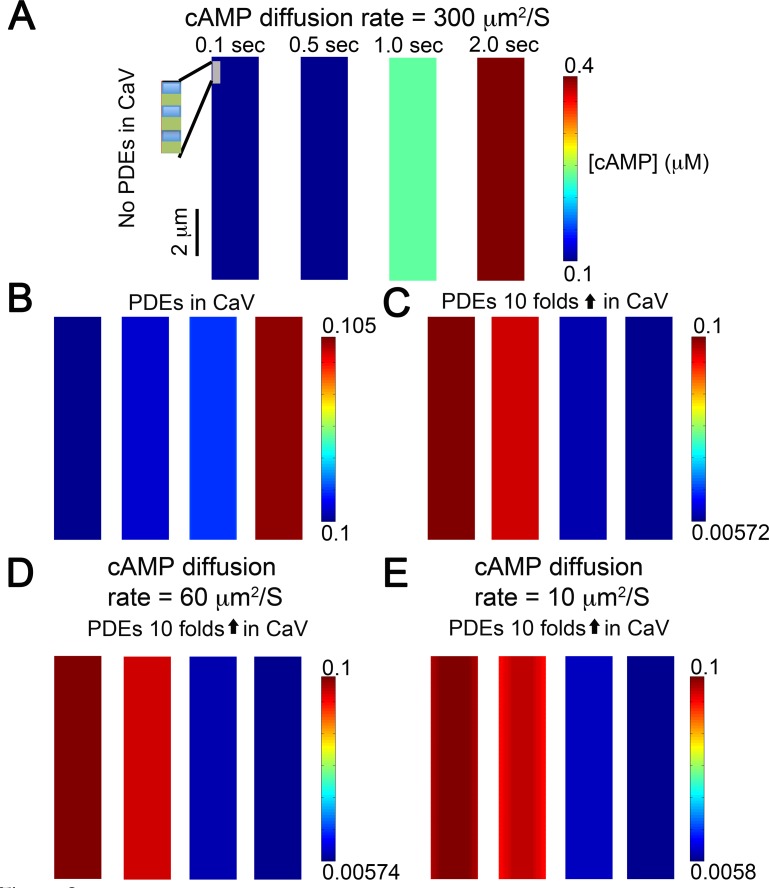Fig 2. Idealized partialDE model demonstrating cAMP generation and diffusion (diffusion coefficient 300 μm2/s) from t-tubular caveolar microdomains (seen as rectangles along edge of inset) at various time points following β1AR stimulation with 30 nM isoproterenol (basal cAMP = 0.1 μM).
(A) As expected, in the absence of PDEs or anatomical barriers, diffusion is rapid with miniscule gradients and cAMP concentration grows unboundedly. (B) To simulate effects of PDEs, experimentally measured concentrations of PDEs were added into caveolar microdomains (10 PDE molecules/cavelor domain), and (C) Effect of 10-fold increase in the concentration of PDEs. No gradients were observed. (D) When diffusion coefficient was set to 60 μm2/s, the simulated results showed sub-nanomolar gradients before 1.0 second. (E) Diffusion coefficient was set to 10 μm2/s. Miniscule gradients (sub-nanomolar) were observed during the early time periods (before 1.0 second) when concentration of PDE was increased 10 fold.

